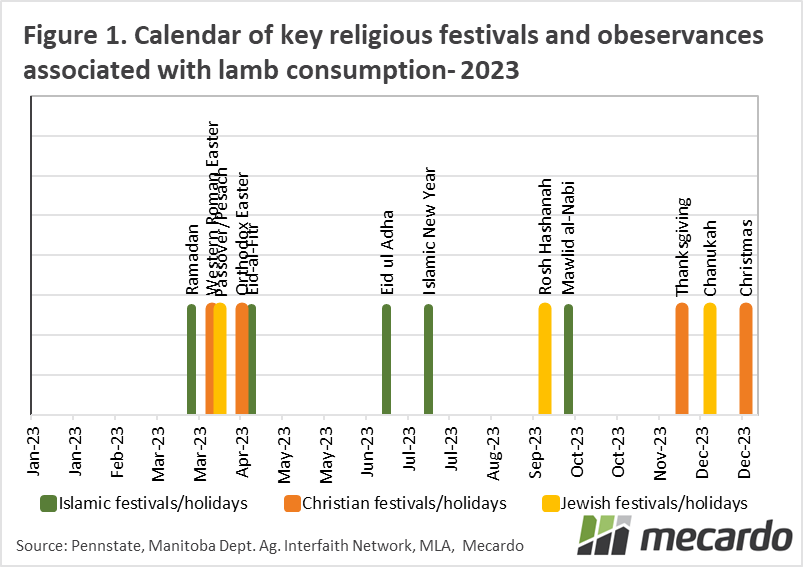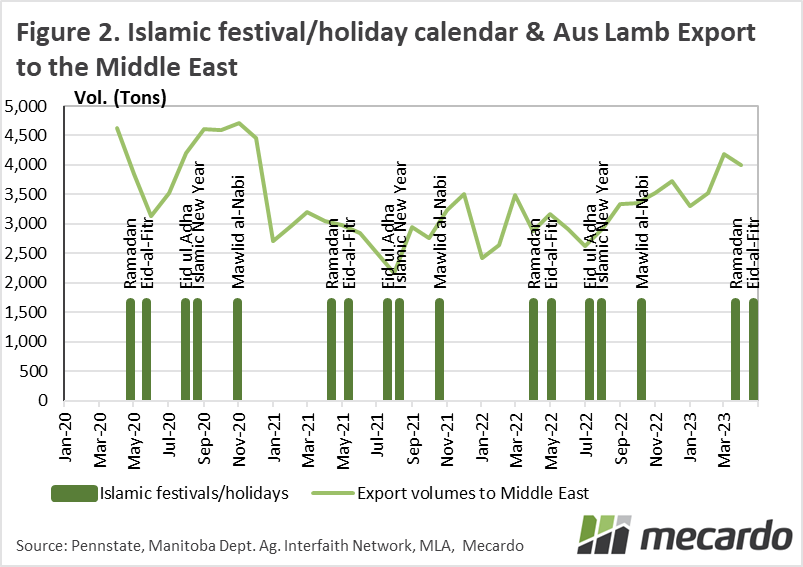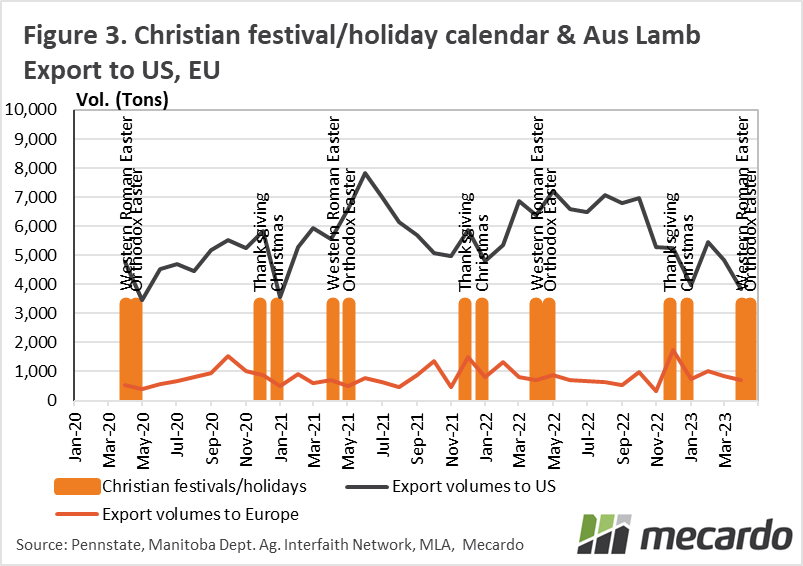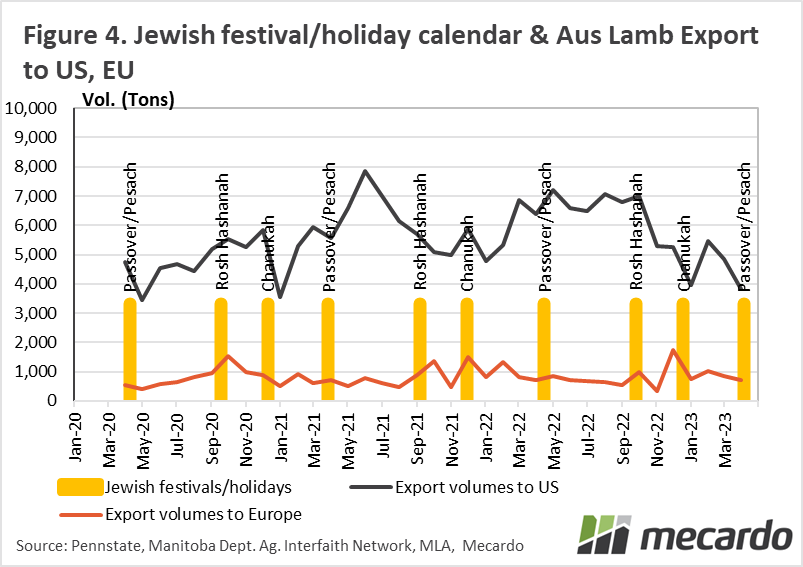Lamb consumption tends to be influenced by ethnic, cultural, and religious drivers, which can create a highly seasonal pattern of demand. The question is at what times of the year is the lamb market primarily influenced by the religious calendar?
Some religious calendars feature multiple celebrations and festivities which call for a special meal to be consumed, such as lamb. The symbolic significance of lamb reaches a crescendo point during the northern hemisphere’s spring season, partially through the common origins of the faiths and the Bible in the Middle East. A kosher cook prizes a cut of lamb from the foresaddle, up to the 12th rib. In contrast, halal lamb consumed by Muslims is slaughtered facing mecca in conjunction with a blessing, and only the hindquarter is consumed.
Many Orthodox Christians, follow traditions of carefully selecting lambs for slaughter prior to Easter and processing themselves. A preference is for lambs that will fit within the oven or are suitable for spit roasting.
An issue in the US is that “spring lamb” is not fully ready for market prior to Easter, so high premiums are applicable to small lambs, and thus the meal is a luxury for some consumers. However, the practice of spit-roasting lambs in the US is reportedly beginning to wane among the American Greek community.
The dates for many events within the religious calendar tend to drift each year, making eyeball analysis of pricing and volume patterns more challenging over a longer timeframe. For example, because the Muslim, or Hijri calendar is shorter than the Gregorian calendar most countries use for civil purposes, Islamic celebrations such as Ramadan will shift back 10-12 days each year, resulting in all festivals landing in every season of the year, over a 33-year cycle.
Figure 1 depicts the positioning of 12 key dates on the religious calendar observed by the Islamic, Christian, and Jewish faiths that are typically associated with the consumption of lamb. By placing markers on our charts to represent religious holidays across multiple years we can visually compare export volumes of various lamb specifications over a given time horizon to demonstrate the significance of festivals and celebrations on a global stage upon demand for Australian Lamb.
Examining Figure 2, notwithstanding the year-to-year total fluctuations in lamb exports, it can be observed that there is a regular ramp-up in the volume of Australian lamb exports to the Middle East in the leadup to Ramadan and Mawlid-Al-Nabi each year.
Moving to Figure 3, prior to Easter and Christmas, lamb export to the US, and Europe tend to increase.
On Figure 4, we consider the possible impact of Jewish celebrations on lamb export volumes in the US and Europe. Just prior to Passover/Pesach, US export volumes tend to spike, and similarly, in the EU, there is a noticeable pickup in volumes prior to Chanukah. The US is home to close to 8 million people who identify as Jewish, although the practice of eating lamb with bitter herbs on the eve of Passover varies depending on denomination.
What does it mean?
The influence of religion and tradition is significant in the international lamb market, with events on the Islamic, Jewish, and Christian calendars typically associated with lamb consumption and an increase in demand for imports in several key markets. The shifting calendar of some holidays has implications for the timing of demand for lambs of specifications desired for these target markets.
Have any questions or comments?
Key Points
- Lamb has religious significance to many cultures across the globe.
- Lamb consumption is traditional during celebrations on the Islamic, Christian, and Jewish religious calendars, and in some cases creates demand for particular lamb specifications.
- The pattern of Australian lamb exports to some destinations is influenced by the dates of some key religious festivals from various faiths.
Click on figure to expand
Click on figure to expand
Click on figure to expand
Click on figure to expand
Data sources: MLA, Penn State University, Manitoba Department of Ag. Interfaith Network, Mecardo
















